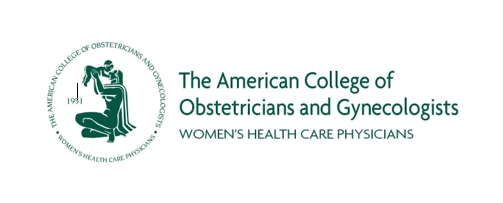ACOG Practice Patterns related to Opioid Use during Preg
Practice Patterns related to Opioid Use during Pregnancy and Lactation
11 Att6 Short Introduction and Survey
ACOG - Short Introduction and Survey
OMB: 0920-1168
 Draft Form
Approved
Draft Form
Approved
OMB No. 0920-xxxx
Exp. Date xx/xx/xxxx
August 12, 2016
Dear ACOG Fellow or Junior Fellow:
The American College of Obstetricians and Gynecologists requests your participation in our questionnaire study, Practice Patterns related to Opioid Use during Pregnancy and Lactation.
This condensed version of our survey should take approximately 5 minutes to complete. If you do not provide care for pregnant patients, please check the below box at the top of the survey and return the questionnaire.
Participation is voluntary, you may skip any question, and you may end your participation at any time without consequence. Completing and returning the questionnaire is an indication that you have consented to participate. Individual responses are confidential, and data will be analyzed and reported in aggregate form. We greatly appreciate your time to complete and return this questionnaire.
Please return the questionnaire in the enclosed postage-paid return envelope by XXX. If you have any questions, please contact Lauren Stark at 202-863-4998.
Sincerely,
![]()
![]()
![]()
Jay Schulkin, Ph.D. Mike Power, Ph.D. Lauren Stark, MPP
Director of Research Senior Research Associate Research Coordinator
Practice Patterns related to Opioid Use during Pregnancy and Lactation
If you do not treat pregnant women please check this box □ and return the survey blank.
1![]() .
To what extent is any routine screening of the following among
pregnant
patients in your practice a priority?
.
To what extent is any routine screening of the following among
pregnant
patients in your practice a priority?
|
Not a priority |
Moderate priority |
High priority |
a. Prescription opioid use |
|
|
|
b. Non-medical use of prescription opioids |
|
|
|
c. Non-medical use of other prescription medications (benzodiazepines, barbiturates, etc.) |
|
|
|
d. Illicit substance abuse (heroin, cocaine, hallucinogens, etc.) |
|
|
|
e. Marijuana use |
|
|
|
f. Tobacco use |
|
|
|
g. Alcohol use |
|
|
|
h. Depression |
|
|
|
2. How do you manage pregnant patients who have opioid use disorders (illicit use or non-medical use of prescription opioids)?
|
Never |
Rarely |
Sometimes |
Usually |
Always |
a. Advise opioid cessation |
|
|
|
|
|
b. Advise inpatient, monitored withdrawal |
|
|
|
|
|
c. Advise methadone maintenance |
|
|
|
|
|
d. Advise buprenorphine maintenance (i.e. subutex) |
|
|
|
|
|
e. Advise buprenorphine and naxolone maintenance (i.e. suboxone) |
|
|
|
|
|
f. Conduct brief intervention/motivational interviewing/cognitive behavioral therapy |
|
|
|
|
|
g. Screen for depression |
|
|
|
|
|
h. Screen for anxiety or use of benzodiazepines |
|
|
|
|
|
i. Screen for intimate partner violence |
|
|
|
|
|
j. Inform about fetal effects (e.g., NAS) |
|
|
|
|
|
3. How do you manage postpartum patients who have opioid use disorders (illicit use or non-medical use of prescription opioids)?
|
Never |
Rarely |
Sometimes |
Usually |
Always |
a. Advise opioid cessation |
|
|
|
|
|
b. Advise inpatient, monitored withdrawal |
|
|
|
|
|
c. Advise methadone maintenance |
|
|
|
|
|
d. Advise buprenorphine maintenance (i.e. subutex) |
|
|
|
|
|
e. Advise buprenorphine and naxolone maintenance (i.e. suboxone) |
|
|
|
|
|
f. Recommend breastfeeding if on opioid-assisted therapy |
|
|
|
|
|
g. Counsel on effective contraceptive methods |
|
|
|
|
|
h. Refer to a treatment program or facility |
|
|
|
|
|
i. Refer to addiction specialist |
|
|
|
|
|
k. Refer to psychiatry |
|
|
|
|
|
k. Screen for depression |
|
|
|
|
|
l. Screen for anxiety or use of benzodiazepines |
|
|
|
|
|
m. Screen for intimate partner violence |
|
|
|
|
|
4. Years of practice post-residency: ______ 5. Are you board certified in MFM? Yes No
6. Are you certified as an addiction specialist? Yes No
7. Please estimate the percentage of your patients who are:
Medicaid insured: ______% Privately insured: ______% Uninsured: ______%
Public Reporting of this collection of information is estimated to average 15 minutes per response, including the time for reviewing instructions and completing and reviewing the collection of information. An agency may not conduct or sponsor, and a person is not required to respond to a collection of information unless it displays a current valid OMB number. Send comments regarding this burden estimate or any other aspect of this collection of information, including suggestions for reducing this burden to CDC/ATSDR Reports Clearance Officer, 1600 Clifton Road NE, MS D-74, Atlanta, GA, 30033; ATTN: PRA (xxxx-xxxx).
| File Type | application/vnd.openxmlformats-officedocument.wordprocessingml.document |
| Author | Lauren Stark |
| File Modified | 0000-00-00 |
| File Created | 2021-01-23 |
© 2025 OMB.report | Privacy Policy